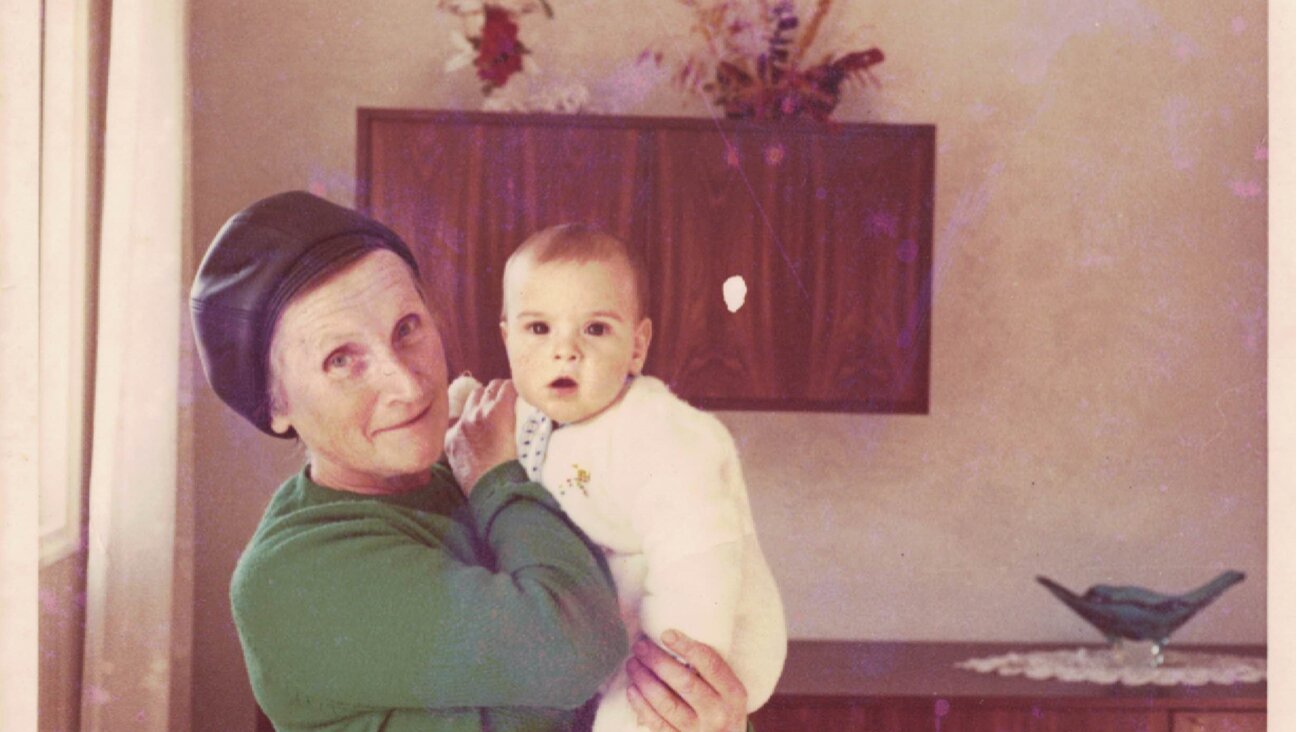Looking ‘White,’ Thinking ‘Other’
‘Be a Jew in private and a human being in public.” This was the mantra with which a generation of American Jews was raised, and the idea was to keep the Jewish particulars to yourself and blend in to the American dream. But the quality of the American Jewish experience has changed in the past 50 years.
For much of the last century, American Jews worried about being too easily identifiable as Jews. Although my husband’s Hebrew name is Binyamin, for instance, this child of the 1940s was named Barry in English because Benjamin sounded “too Jewish.” A decade earlier this same motivation seems to have resulted in a surfeit of Jewish boys named Irving, Herbert, Milton and Eliot — names which have a distinctively Jewish, almost deli-like aroma, although one can imagine that in their day these might have been considered the height of respectability. Is it telling that each of these surnames corresponds to the last name of an English-language literary figure — Washington Irving, George Herbert, John Milton and George Eliot — as if a boy by any more Yiddish-sounding name would not smell as sweet?
But beginning in the 1960s, the comfort level about being, or at least seeming, Jewish began to shift, to the point where boys who once wore kippot only in Jewish settings — preferring to display their Jewishness inside, but come across as all-American on the outside — grew into men who were comfortable wearing kippot on the street in broad daylight.
Jewishness shifted from being a category of social shortcoming and disadvantage to being associated with high status and accomplishment. American Jews today are comfortable in the corridors of power and the center of culture, even if our voting power has dissipated with decreased population size. It may be surprising to recall that as recently as 1948, Jews were considered a separate (Hebrew) race, and part of American Jewish transformation in the 20th century involved the story of how we became “White Folk,” in the words of author Karen Brodsky.
So “whites of a Jewish persuasion” is how American non-Jews came to think about Jews. But what about the flip side: how have Jews thought about their relationship to the broader Western world?
In 1937, prominent social psychologist Kurt Lewin wrote an article titled “On Jewish Self-Hatred” — a subject matter that seems hard to imagine today. The degree of self-hatred he observed then we simply do not see today in current studies. Self-loathing is one response to being denigrated by the dominant culture while feeling insecure in your own skin.
In fact, among American Jews the extent of Jewish pride is overwhelming. Most American Jews feel positive about being Jewish. Only a tiny percentage, 3%, says they have negative feelings, and a minority report neutral or ambivalent feelings.
Assimilation was what we termed the shedding of traditional Jewishness markers — names, dress, accents — in order to become fully American and make it in that world. It was expected to involve moving away from original Jewishness and taking on new practices, to the point where newcomers were to become indistinguishable from the mainstream: well-educated, largely well off, and, well, white.
However, I still find it hard not to write “other” on official forms that ask about race, though I typically end up checking white. Compared to African American, Hispanic, Native American and Asian, white seems the best fit given the realities of American social arrangements — but it’s not necessarily a real indication about my own group identity. Yet the designation leaves us opaque as Jews.
Despite our forebears’ worries about Jews and Judaism disappearing without a trace into the vastness of the new American frontier, looking at ourselves today it’s clear that even as we’ve played a role in shaping the society around us, our Jewishness has also been shaped by the America context. We are part of the diverse American scene, but we also retain a distinctive world view — and one distinctive approach is how we’ve been trained to think of our Jewishness as a private matter, buttoned up like some dirty little secret. Need it be necessarily so?
It’s worth contemplating how Jews, in becoming “white,” came to be defined solely as a religion in America, leaving aside other aspects of our peoplehood and civilization. (I leave it to historians to teach us the full story of this transformation). It appears as if the Jewish leaders of the early 20th century, in the face of forceful American nativist sensibilities at that time, looked out on the Protestants’ set-up and determined that our best strategy in Americanizing was to adopt the common metric of “religion” and “denominations,” and to play down our self-image as a people.
This focus on Jews being defined strictly as a religion naturally went hand in hand with advocating for a religiously neutral public space, and gave rise to the American Jewish community’s forceful advocacy of keeping church separate from state.
But recent revelations about the insensitive religious climate at American military academies, and the Supreme Court’s rulings this week about the Ten Commandments, demonstrate that when it comes to the American public arena, Evangelical Christians are playing hard ball. The question is, will the Jewish community even field a team?
Bethamie Horowitz, a social psychologist, is research director for the Mandel Foundation.

I hope you appreciated this article. Before you go, I’d like to ask you to please support the Forward’s award-winning journalism this Passover.
In this age of misinformation, our work is needed like never before. We report on the news that matters most to American Jews, driven by truth, not ideology.
At a time when newsrooms are closing or cutting back, the Forward has removed its paywall. That means for the first time in our 126-year history, Forward journalism is free to everyone, everywhere. With an ongoing war, rising antisemitism, and a flood of disinformation that may affect the upcoming election, we believe that free and open access to Jewish journalism is imperative.
Readers like you make it all possible. Right now, we’re in the middle of our Passover Pledge Drive and we need 500 people to step up and make a gift to sustain our trustworthy, independent journalism.
Make a gift of any size and become a Forward member today. You’ll support our mission to tell the American Jewish story fully and fairly.
— Rachel Fishman Feddersen, Publisher and CEO
Join our mission to tell the Jewish story fully and fairly.
Our Goal: 500 gifts during our Passover Pledge Drive!























